Really small convertibles are really rare.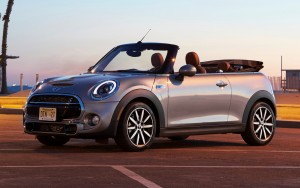
There are just two.
They are the Mini Cooper convertible and the even smaller Fiat 500 convertible.
Both are retro-cute, very fun and not (if you’re careful about options) unaffordable.
But which of them to pick – and why?
The relative pros – and cons – may surprise you.
WHAT IT IS
The Mini convertible and Fiat 500 convertible are… the convertible versions of the Mini Cooper and Fiat 500.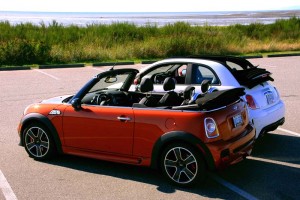
They are similar in terms of being very small – the Mini is almost two feet shorter, end to end than a Porsche Boxster roadster and 16.5 inches shorter end to end than a VW Beetle convertible (the Fiat is even smaller – almost three feet shorter than the Porsche and 28.8 inches shorter than the Beetle).
Both are perkier than a Dachshund on Red Bull and just as entertaining.
The Mini – focus of this review – is the pricier of the two.
Base price is $25,950 with a turbocharged three cylinder engine and six-speed manual transmission. The higher-performance S trim with a larger and stronger 2.0 liter turbocharged four cylinder engine starts at $29,600 with the manual six-speed.
Both cars can be ordered with a six-speed automatic.
There is also John Cooper Works (JCW) version, with a pumped-up (even more) version of the 2.0 liter four and suspension/wheel and tire and trim upgrades in addition. It lists for $35,600.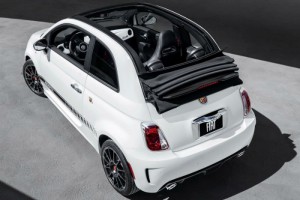
The Fiat’s a much cheaper date: $20,395 for the base “Pop” trim 500 convertible (with five-speed manual) and $24,495 for a loaded “lounge” trim.
There’s also a high-performance Abarth trim – which (like the Mini S) gets a high-powered turbo engine but unlike the Mini S, the top-of-the-line Fiat only stickers for $26,695 to start – or about $800 more than the price of the base trim Mini.
However, the Fiat “convertible” isn’t really.
It has a targa roof – the cloth center section can slide open but the sides are metal and fixed in place.
WHAT’S GOOD
The “British” Mini is built by Germans (BMW) … and looks and feels it.
Base engine is small, but isn’t weak.
Neat three-position soft-top (it has a “sunroof” option in addition to all the way open and all the way closed).
Lots of options.
Would you believe that the Mini has less room inside (in the back seat and for cargo) than the much smaller on the outside Fiat?
Those options are pricey; it’s easy to spend $40k on a well-optioned Mini S. It’s impossible to spend more than $28,725 on a loaded Fiat 500 Abarth convertible (top of the line, with every available option).
Mini S has a small tank – 11.6 gallons – and a hearty appetite (23 city, 33 highway).
UNDER THE HOOD
One of the mini’s charms is that it’s available with multiple (three) different engines (well, two different engines with the second offered in hot and hotter versions).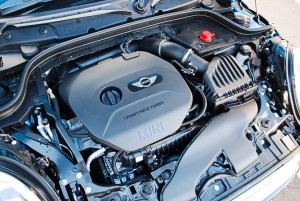
And they all “Motor Hard” – as Mini puts it.
The standard engine is a very small (1.5 liter) three cylinder – with a turbo to make up for the missing fourth (and lost half liter). It makes 134 hp and 162 ft.-lbs. of torque – all of it available at a fast idle (1,250 RPM).
This is enough muscle to get the Mini to 60 in just over seven seconds – an excellent run vs. the base-engined Fiat 500 (1.4 liters, four cylinders, no turbo – and just 101 hp and 98 ft.-lbs. of torque) which takes about 10.5 seconds to get to 60.
The base Mini’s mileage is also very good: 28 city, 39 highway with the manual (1 MPG less with the optional automatic) vs. a just slightly better 31 city, 40 highway for the manual-equipped 500 (and 27 city, 34 highway with the optional automatic; noticeably poorer than the Mini).
The Fiat is, however about $5k less to start.
That buys a lot of gas.
But how much are the extra three seconds to 60 worth to you?
Next up, Mini-wise, is the Mini S – which gets a four cylinder (2.0 liters) that’s also turbocharged but ups the horsepower ante to 189 and the torque to 207 ft.-lbs. at the same 1,250 RPM. So boosted, the soft-top Mini’s 0-60 number drops to about 6.5 seconds.
Unfortunately – but not unexpectedly – the mileage also drops: 23 city, 33 with the six-speed manual; 26 city, 33 highway with the six-speed automated manual. With just an 11.6 gallon fuel capacity, this version of the Mini seems thirstier than it actually is.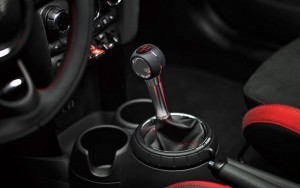
Fiat’s counter to the Mini S is the 500 Turbo – which adds a (surprise!) turbo to the 1.4 liter engine, goosing its output to 135 hp and 150 ft.-lbs. of torque. This is sufficient to run almost as quick as the base-engined/three-cylinder Mini – but the turbo Fiat’s 8 second to 60 run is still no threat to the standing of the Mini S.
For the Maximum Mini, you’ll want the JCW package – which adds boost and 39 hp (228 total) and knocks the 0-60 time down to 5.9 seconds.
Fiat’s riposte is the 500 Abarth, which (like the JCW Mini) gets a boosted-more version of the 1.4 liter engine, but power peaks at a comparatively disappointing 160 hp and 170 ft.-lbs. of torque, which gets the little Fiat to 60 in the same 7.1 seconds as the base-engined Mini.
But, the specs don’t tell the whole story. For that, a road test is required.
The Mini – any version – smokes the Fiat (any version). It’s quicker, pulls harder, runs stronger.
Especially the base-engined Mini. Which might just be the Mini to get.
The combination of very good performance – it feels even quicker than it actually is because it’s so small; like going down a steep hill at 30 MPH on a roller skate – and excellent economy at a still-reasonable price is hard to gainsay.
As opposed to the base-engined Fiat, which is even more economical – and even more reasonably priced – but utterly outgunned.
The Fiat’s pushing 11 second to 60 Max Effort run is weak. There are maybe two new cars that are weaker – the Prius C hybrid and the Mitsubishi Mirage – and they’re supposed to be toasters.
You’ve got to be on the ball to make up for the Fiat’s lack of thrust with anticipation and good timing. In close traffic, you’re ok because most drivers are Clovers and so not paying attention and rarely making use of the power they’ve got. If you get the drop on them, you can take advantage of open slots in traffic, the general obliviousness of other drivers.
But if you need acceleration and call upon the God of Thrust, he will not answer your supplications. And on the highway, the little Fiat is as out of its depth as Jeb! making a run at Donald.
The Mini – the base-engined Mini – isn’t. It has about the same power-to-weight ratio as a Mazda Miata and performs accordingly. It has reserves, something the Fiat doesn’t.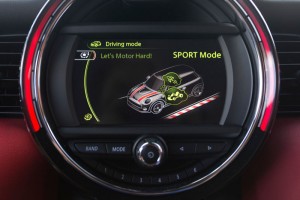
It also has wheelbase – 6.5 inches more wheelbase (97.1 inches vs. 90.6) than the Fiat, which is 4.1 inches taller, too (59.8 inches vs. 55.7 inches). The combo of short wheelbase and tall profile makes it more susceptible to being batted around by crosswinds than the Mini.
That said, driving the Fiat – the Abarth Fiat – is like saddling up an old Kawasaki two-stroke triple. Just without the smoke. It is a belligerent little thing, its exhaust popping (and waste gate snapping), with nearly 30 pounds of boost pressurizing the 1.4 liter engine to near-explosive levels. The Mini S will still outrun it, easily – but the Fiat makes the run more thrilling. God (and the people who wrote up the warranty coverage) only knows how long the Fiat’s pressure-cooked engine will hold up, of course.
I’d pick the standard-engined Mini over either.
It strikes just the right balance between power/performance and economy – both to buy and to operate. It’s also, arguably, the most fun. Working that little three cylinder turbo fosters a closer, more intimate relationship between you and the car.
It also, arguably, fits the car.
The Mini S – which touts power and speed – is quicker but not nearly as quick as other medium-warm and comparably priced convertibles like the convertible versions of the Chevy Camaro and Ford Mustang. They are larger (much larger) cars but their performance (0-60 in just over 5 seconds with their four cylinder engines) is much better than the Mini’s – and their prices are about the same, inviting cross-shopping.
The regular Mini, on the other hand, is just quick enough to be fun and vastly superior to almost-oafish in comparison plus-sized convertibles like the Camaro and Mustang as far as Froggering through traffic.
There is no liking the Mini.
People tend to either love them … or not.
Like sushi.
Same goes for the Fiat.
You are either cool with being in just about the smallest thing on four wheels … or you are not. If you are, the smallness of these cars is a big part of the allure.
Depending on where you sit – and how much you need to carry.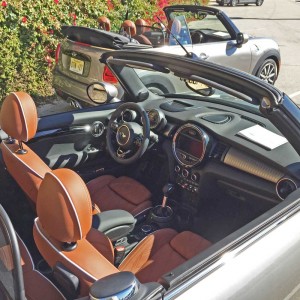
Both cars have much more room for the driver and front seat passenger than you’d probably guess: 41.4 inches of legroom for the Mini and 40.7 inches of legroom for the Fiat. Headroom up front is also excellent: 39.8 inches for the Mini and 38.9 for the Fiat.
For a sense of these dimensions, here are the specs for the current “gold standard” of mid-sized family sedans, the 2016 Toyota Camry: 41.6 inches of front seat legroom and 38.8 inches of front seat headroom. The Camry is – for the record 190.9 inches long overall.
That’s three-plus feet shorter overall than the Mini (and four-plus feet shorter end to end than the Camry).
But the Mini and the Fiat’s back seat (and trunk) is another story. Several different stories.
On the one hand, the Fiat seems to have a more passenger-friendly rear seat, with 31.7 inches of legroom (vs. 30.9) for the Fiat. This is more than in the Mustang convertible (30.8 inches) and much more than in the Camaro convertible (GM is so embarrassed about this stat that it doesn’t even publish the stat, but it’s around 27 inches).
However, there is a huge disparity headroom-wise.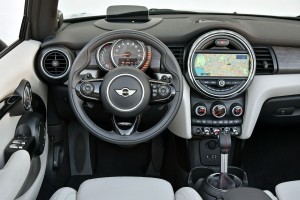
The Mini has a very decent 39 inches. The Fiat – ironically – has a duck-and-cover 35.6 inches. I say ironically because of the Fiat’s much taller (by some 4 inches) roofline. Where’d all the headroom go?
On the other hand, the Mini’s “trunk” is more like a purse: You’ve got just 7.6 cubic feet of capacity to work with vs. 9.5 cubic feet for the Fiat.
In real-world terms, the Mini is more viable if you need to occasionally carry people more than stuff. And if you’re not carrying people, you can always use the back seats for stuff. In the Fiat, you can carry more stuff – but carrying people is not crutchable.
You – your passengers – will just have to deal with the limited space.
Both cars have uniquely retro-snarky interiors, but the Mini’s is higher-rent as it it ought to be given its higher cost. In the S model you can get the same (or very similar) pleated leather seating as you’d find in a six-figure BMW 7. Which is not surprising given both the BMW 7 and the Mini are built by the same company.
Echoing some of the design touches found in classic Minis (from the ’60s) are modern Mini touches such as the 8.8 inch central display cluster – which instead of the classic Mini’s central-mounted mechanical speedometer is an electric light orchestra of technology; it is also the visual interface for the car’s infotainment systems – selected and engaged via a BMW-esque rotate and click mouse on the center console.
Also the ring around the base of the shift lever, to the left for Sport (Let’s Motor!) and to the right for Eco (Let’s Minimize!).
The LED light bar surrounding the central LCD cluster goes from red-orange to green, depending on your selection.
Cheery tones are part of the Mini Experience, too. The car makes happy little beeps and (occasionally) disgruntled sounding protest burbles when something’s amiss – like the parking brake lever still set when you’re in gear and trying to drive off.
But the Mini convertibles neatest feature is its three-mode soft-top.
In addition to the usual Up and Down, there is a “targa roof” mode that opens up the top section but leaves the rest in place. This can be opened and closed at any road speed, too. No need to slow or stop to drop the top.
Well, slide the top.
The Fiat 500 “convertible” only has the targa roof option. The top does not drop. 
Speaking of tops dropped: The Mini is available with an app that pipes rain-coming warnings directly to your sail fawn. This is handy when you left the car parked outside with the top open while you’re maybe having dinner at a restaurant, unaware that the sky’s about to open up.
Very groovy, baby.
THE REST
One of the many neat things about the Mini is the many options and packages that are available. There are so many options it’s possible to create a unique Mini. Or at least a Mini that’s different from most of the other Minis running around out there.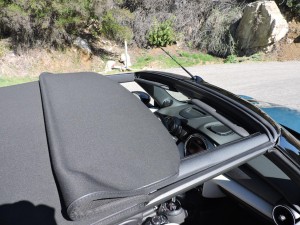
One of the not-so-neat things is the cost of some of these options and packages – like the $3,000 JCW appearance package for the base Mini ($5,000 if you prefer “fully loaded” – and yes, that’s the name of the package). You do get a lot of stuff (the “fully loaded” package includes a kicking 410 watt, 12 speaker Harman Kardon audio rig, dynamic/adjustable suspension, upgraded 8.8 inch LCD screen with GPS, heated seats, special wheel and tire package with 55-series run-flats and multiple trim upgrades) but – holy mackerel – it’ll cost you a lot.
My test Mini – an S model with pretty much everything, including the “fully loaded” package (discounted slightly to $4,750 for the S), the BMW 7-esque Chesterfield Malt quilted leather seats ($1,750),the optional six-speed Sport automatic ($1,500) came in just $200 shy of $40,000 ($39,800).
That is a big number for such a small car.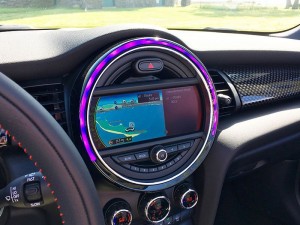
Counterpoint-wise, a top-of-the-line Fiat 500 Abarth with – literally – everything (the $975 Comfort/Convenience package, the $700 Beats upgrade audio rig, the $320 Mopar Scorpion package and the $135 All Weather package) comes in well under $30k.
That $10k-plus difference is not small.
THE BOTTOM LINE
Each of these two has its stronger and weaker points. Both will make you smile – but one charges more for the privilege.
As always, you pays your money and you takes your pick.
EPautos.com depends on you to keep the wheels turning! The control freaks (Clovers) hate us. Goo-guhl blackballed us.
Will you help us?
EPautos stickers – new design, larger and magnetic! – are free to those who send in $10 or more to support the site.
Our donate button is here.
If you prefer not to use PayPal, our mailing address is:
EPautos
721 Hummingbird Lane SE
Copper Hill, VA 24079




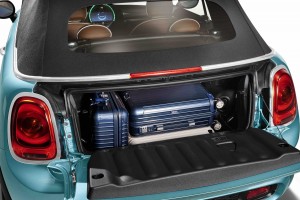
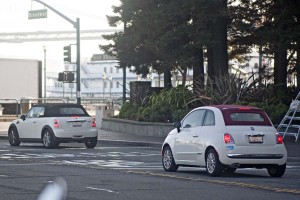
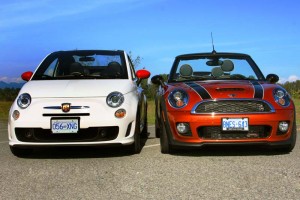







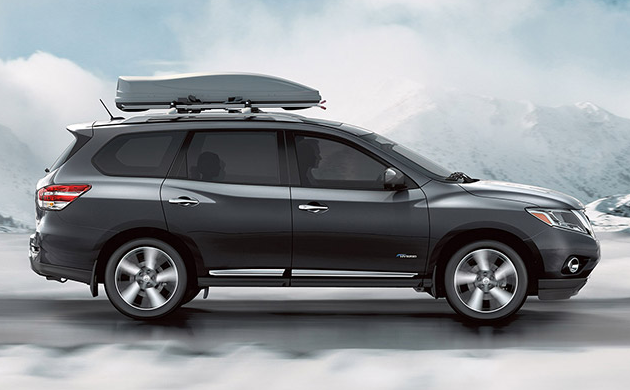
I’ve had my ’13 Abarth ‘convertible’ for three years now. It has been great fun, and is practical.
When my 6′ 3″ son is home, he drives and I sit in the back seat, allowing my wife to sit in the front. The rear is tolerable for jaunts to a restaurant and across town to visit the in-laws, but it is clearly not suitable for long-distance travel for adults.
On a 400 mile round trip for camping, my son and I got 36 MPG in a fully packed car.
It is great being able to drop and retract the top at 40-45 MPH.
Thanks for the heads up on blown piston rings. I do not take mine to the redline often, but it is fun to accelerate briskly from a stop.
I learned last week that my little car is no match for a Miata when accelerating from a stop through a semicircle on-ramp and onto the highway. Probably poor technique by me contributes.
I am very happy with my poseur — it cannot possibly live up to its exhaust note — car!
Good stuff, John!
Looks like Mazda’s Miata may have some new competition for that “very special” market segment that it had a monopoly on for so long.
Hi Mike,
Indeed!
I like the Miata a lot but it is an extremely impractical car. The lack of back seats and trunk space make it a hard car to own as one’s only car.
The Mini has the Fun Factor down – and it’s practical enough to work as an only car. This includes the fact that it is FWD, which makes it more winter-viable than the RWD Miata.
Eric,
We must be using different definitions.
To me, “practical” and “ragtop” are mutually exclusive concepts.
When a NOAA alert says likely deadly hail with cases of dead livestock already I’m not looking for a rag top. That’s something you have to consider in these parts. Of course west Tx. sun eats them like they’re paper. They’re just not a good choice in this part of the world.
Some of the old Brit roadsters had removable hardtops available. I don’t know if that’s the case on these new models.
The top on a convertible is a maintenance item so to me right away that takes it out of the daily driver category, especially if it has to be parked outside.
Hi Jason,
I often miss my T-topped ’78 Camaro!
Hi Mike,
It’s less an issue today than it was yesterday. Today’s convertibles are so well-insulated and tightly sealed that you do not suffer in the winter (or the wet). They’re also more durable – and have glass rather than plastic back windows.
I’d still rather have T-tops… but Uncle won’t allow it.
One thing for sure, these cars won’t be bought by people who keep one a long time. I know turbo-charging is a great thing but I also know the engines with turbos and last a long time are very expensive for good reason.
Reckon what the nickel content in these engines are? I’m sure it various from one maker to another.
Diesel turbo engine don’t worry about having a block that side load on the pistons won’t eat up, they have liners made from really strong steel alloys. Those forged steel cranks are there for the long haul too and so are the rods. Same goes for everything else in them including the turbo. If the oil gets low, a switch stops the engine. Same for coolant and it doesn’t take much of low coolant level to keep one from starting. Hot coolant?, there’s a gauge, a warning light and a buzzer. Same for oil temp or pressure. Do the makers of these car engines have those type of safeguards? If they do, do they say so in the manual or do they just shut down and let a tech figure it out?
Acquaintance of mine has a new Abarth that he uses for a track car, has blown the motor twice in 6 months. Cracked piston skirts IIRC.
FWIW he seems to like POS cars (he’s got an early 90’s Saab 900 turbo too)…
We’ve seen inferior pistons, almost always the skirts, on engines before. That’s most likely the case in that car. I’m sure he uses the best synth oil he can buy but I wonder if that’s going to be enough when pushing new gas engines hard.
I’ve seen skirts fail due to the wrist pin not being installed properly but that always shows up right away.
I cussed hell out of a POS car Thurs., a ’95 Cutlass Supreme Sl. Answer fast now, which is easier to change on a 3.1, water pump or thermostat? Cue Alex and his song.
Maybe I’m getting too old for cars like these. They’re cute and look like they might be fun for a romp, but…. then what?
For less money a guy could buy a used Cayman or Boxster, or – for the joy of driving a slow car fast – a Miata, an old Triumph or ?.
Great review, eric. That roof on the Fiat is giving me flashbacks of the LeCar, though.
Thanks, Yeti!
I like them both because I like small/fun cars. The Porsche qualifies, of course – but one problem with driving a Porsche is that you can expect merciless treatment from cops as well as Clovers, who will do their utmost to box you in, keep you from “speeding” and so on. It gets old after awhile.
That’s a fair point. Cops and clovers can suck the fun out of anything.
Taking care of the Porsche is not insignificant, either.
I’ve actually been considering a small/fun, weekend/summer car, but not for $40K! Miatas are, of course, plentiful around here, but the masochistic tinkerer in me is drawn to the older and weirder.
Eric,
But if you need acceleration and call upon the God of Thrust, he will not answer your supplications. And on the highway, the little Fiat is as out of its depth as Jeb! making a run at Donald.
🙂 Would that Hail o’ God of Thrust give me
strengthacceleration!! Love that paragraph. The God of Thrust can be part of an automotive pantheon of gods.Thrust, Speed, Reliability, Cornering, Touring, Off-Road 😉
Nice review. I consider both cars to be pricey, although they can at least pay lip service to carrying 4 passengers (including driver) unlike the Miata. Although I consider the Miata to be a sportier car than either of these, it has an even smaller 4.6 cubic ft of trunk space.
Thanks, Mith!
I enjoyed writing this one almost as much as driving the Mini and the Fiat 🙂
Keep in mind too that you won’t pay close to sticker with the 500. The folks picked up their “lounge” trim for under 20k.